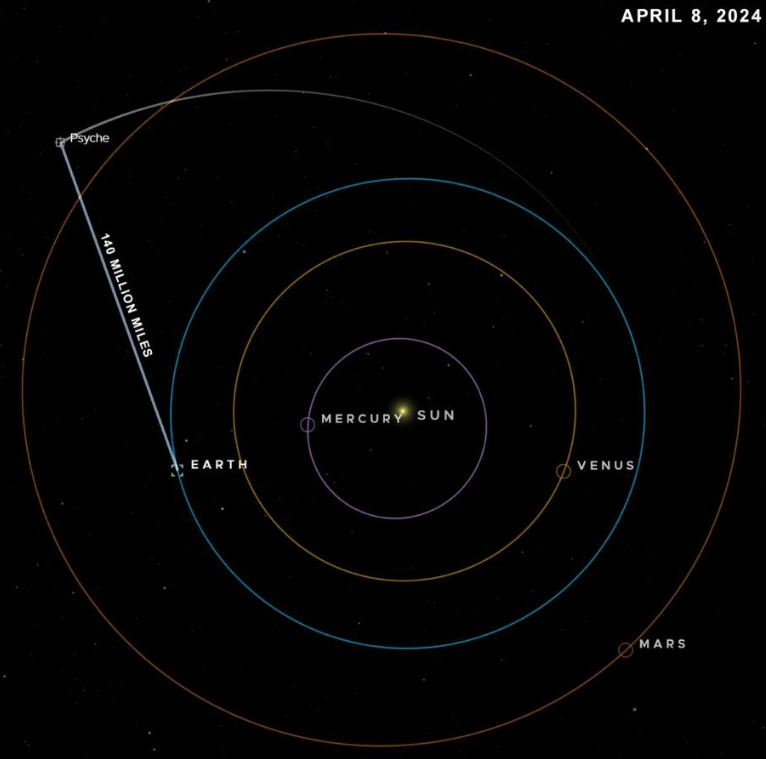NASA's Psyche mission is on its way to study a special asteroid, and along the way, the team is testing a new communications system. The new approach does not use radio waves, but rather an infrared laser, and has achieved impressive results.
On April 8, Psyche sent a message to Earth from an incredible distance of 226 million kilometers. This corresponds to 1.5 times the distance between the Earth and the Sun!
The mission was successful, proving the reliability of the new communications system.
Infrared lasers instead of radio waves
Psyche transmitted its technical data via radio waves via NASA's Deep Space Network. The mission team also decided to send data via a Deep Space optical communications system for the first time. The previous transmissions were not data from the spacecraft, but rather test data.
The April 8 test showed that even from this distance, the data download speed reached 25 Mbps, far exceeding the original target of 1 Mbps. In fact, it has been proven to be 10 to 100 times faster than traditional radio broadcasting!
This achievement is a major milestone in Psyche's mission. It confirms the ability of optical communications to operate over long distances, paving the way for future missions of even distant spacecraft.
The test is very important because it showed that laser communication can work alongside the spacecraft's existing radio communications system, said Meera Srinivasan, head of project operations at NASA's Jet Propulsion Laboratory. In other words, the two systems can work together!


NASA image of the relative positions of the inner and psychic planets when transmitting data
“We downloaded approximately 10 minutes of replica data to the spacecraft during a link on April 8,” Meera Srinivasan said in a statement, adding: “Until then, we had been sending test and diagnostic data to our downlinks from Psyche.” “This is an important milestone for the project, demonstrating how optical communications can be interfaced with the spacecraft’s radio frequency communications system.”
Goal for the future
In previous tests, the spacecraft was much closer, only tens of millions of kilometers away. Photos and even a video clip of a shot from deep space were sent. This technology continues to show promising results, but there are still some issues that need to be resolved. For example, clouds obscure visual observations, which is not the case for radio communications.
“We've learned a lot about how far we can push the system when the skies are clear, even though storms sometimes disrupt operations at the signal receiving stations at both Table Mountain and Palomar,” said Ryan Rogalin, head of the project's electronics division. The receiver is in JPL.
According to the Fox report, the team wants to know if this technology can work over much longer distances. They will test the system again in June, when the distance of the Psyche mission will be 2.5 times the distance between Earth and the Sun. This is the maximum distance between Mars and Earth. If we succeed, we may be able to send a lot of data between Earth and Mars.





More Stories
In Greece Porsche 911 50th Anniversary – How much does it cost?
PS Plus: With a free Harry Potter game, the new season begins on the service
Sony set to unveil PS5 Pro before holiday season – Playstation